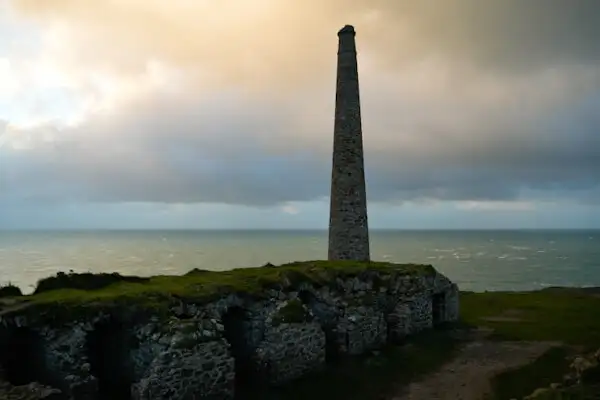Are you getting to the point where you want to take a good camera with you on your travels and are wondering what to buy? Welcome to the club! But don’t worry, we can help you…
Page Contents (click line to jump the text)
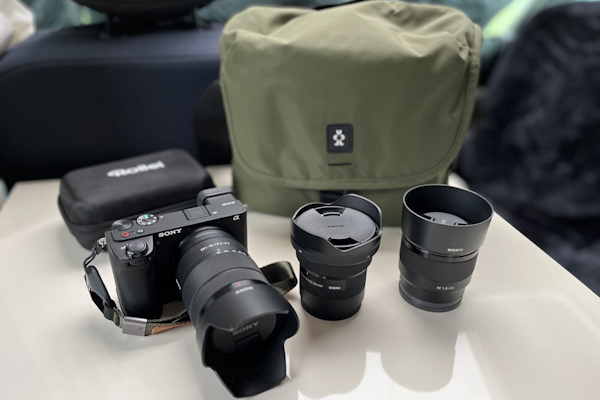
Intro
That’s exactly where I was a few months ago. And nerd that I am, I enjoyed spending months analysing the current camera market and learning (almost) all the technical specifications by heart.
That’s always fun for me. But don’t worry, you don’t have to struggle with that. Because in this article, I’m going to share my findings with you.
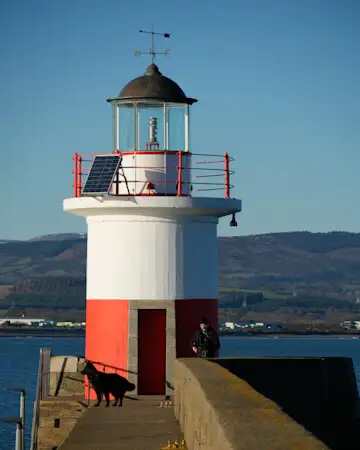
If you are already a professional photographer, this article is not for you. Because then you probably know your way around very well and, above all, know exactly what you need and are looking for.
If you are an interested (ambitious) amateur, and I would categorise myself in this camp, then hopefully I can give you a few good ideas in this article that will help you in your search for a camera.
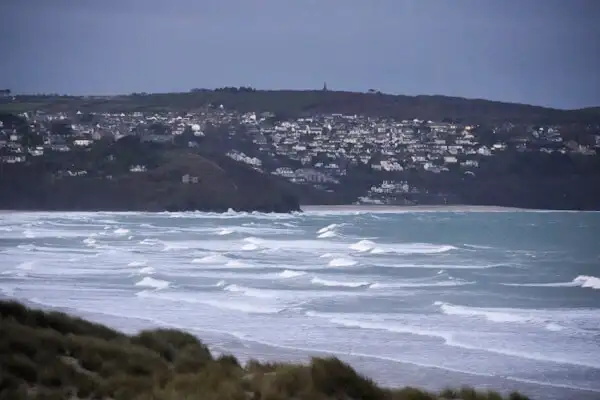
And if you are interested in photography and have perhaps already had some experience with a camera, but find the camera market terribly confusing, then congratulations: You’ve come to the right place, because I’ve written this article for you.
Incidentally, I took all the travel photos in this article with my new camera (winter 2024-2025), so these are my first photos with it. I took the photos of the camera equipment with my iPhone 13. I edited all the pictures minimally(!) in Lightroom and then heavily compressed them for the blog so that the website doesn’t load too slowly. Pixel peeping is not possible, but I think you can still get an impression.
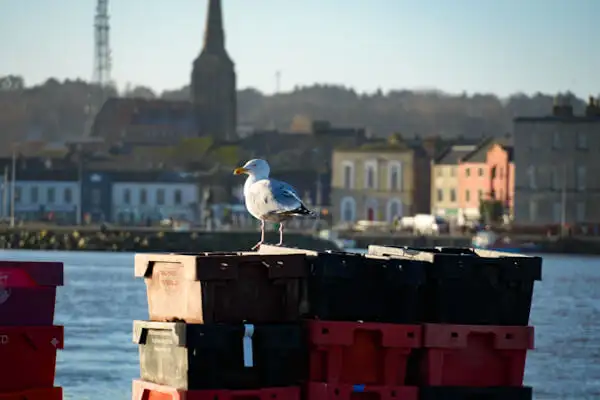
What a good travel camera should be able to do
Before we start our search, perhaps we should briefly consider what the new camera and equipment should actually be able to do. Opinions differ even here, so I’ll just give you my ideas:
For me, a travel camera should be compact and lightweight, otherwise I take far too little with me and could have just stuck with my smartphone. It shouldn’t make my luggage too big and heavy either, because I might want to take it with me not only by car, but also on the train or plane. A lightweight camera is also often a better choice for hiking or other outdoor activities.
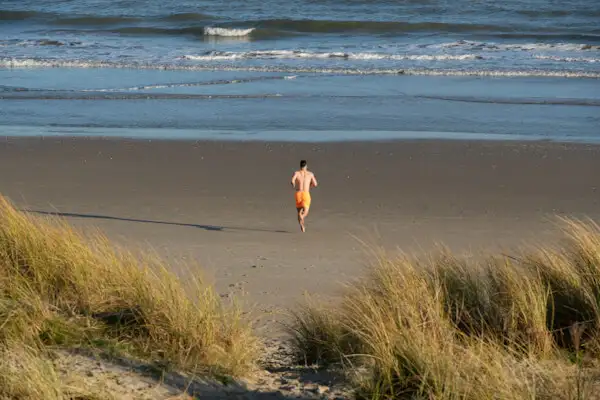
I would like to have a sufficient range of interchangeable lenses available so that I can adapt and expand my equipment for different purposes later on.
The camera and lenses should be of good quality and robust so that they can withstand careless handling on holiday, sand on the beach, splash water by the sea, fog at the lake or snow in the mountains.
In the beginning, I want to be able to cover as many different situations as possible on holiday with one or a few lenses, so I want to be as flexible as possible. Because I never know what to expect: a street scene with people in motion, a spontaneous portrait, a cathedral from the inside, a landscape shot in the mountains, an animal photo or a picture of the starry sky at night? Flexibility is king.
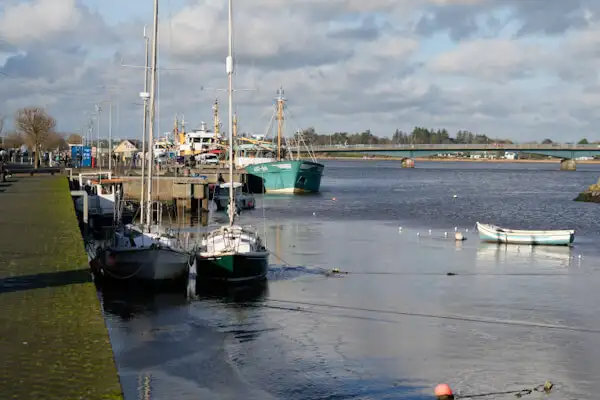
I’m not filming at the moment, just taking photos, but that may change later. So my camera and equipment shouldn’t stand in the way of my future development as a photographer or filmmaker. I’m looking for a good all-rounder camera for many situations.
Good ergonomics are important to me, because I spend many hours taking photos while travelling and don’t want to have to worry about my equipment. For me, this includes a good viewfinder and screen, a good grip, proper controls and a settings menu that I can use easily. Good here means good enough, not luxury.
And ultimately, I only want to spend as much money as is necessary for good quality equipment, but it doesn’t have to be unnecessarily (luxuriously) expensive.
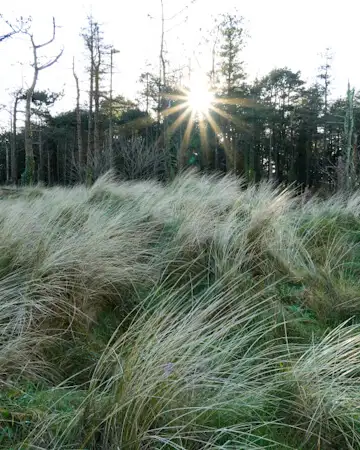
The different camera categories on the market
We are only talking about digital cameras with interchangeable lenses here, i.e. system cameras. And while there are many happy users of older SLR cameras, including my daughter, newer cameras are pretty much exclusively mirrorless system cameras, so-called DSLMs.
These include the entry-level class with cameras up to around 1000 Euros, the mid-range class with cameras up to around 1500 Euros and the slightly higher class for amateurs, which is also the entry-level class for many professional photographers with cameras from around 2000-2500 Euros. The professional segment is open at the top and can become much, much more expensive. And lenses are not necessarily included in these camera prices.
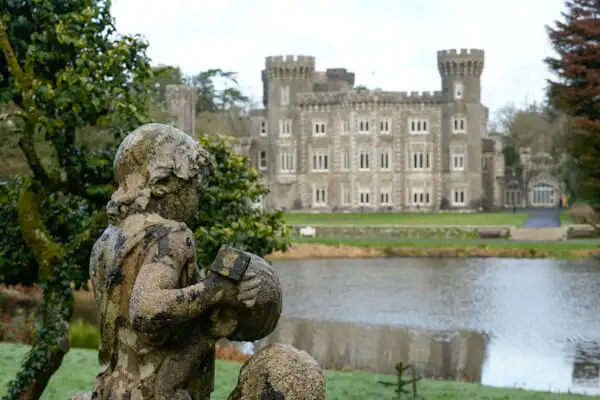
Let’s talk about lenses: Today there are good lenses for around 400-600 Euros, which most of us will be perfectly happy with. But you can also spend 1000 Euros or 2000 Euros or more per lens. As I said, the professional segment is open at the top.
There are photographers who say that a new camera is hardly any different from a camera that is 10 years old. And there are professional photographers who say that lenses have become so good that a mid-range lens today is better than a professional-class lens 10 years ago.
In fact, a great deal has also happened with DSLM cameras in recent years: The electronic viewfinders and screens are getting better and better, the autofocus systems are getting faster and more accurate and the image sensors are also getting better and better.
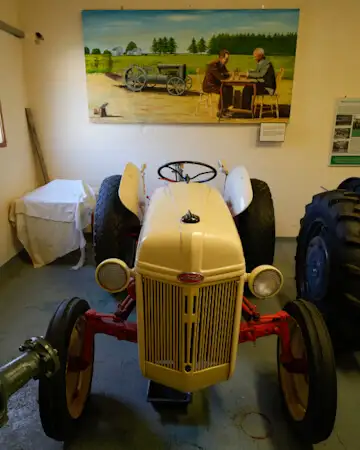
Even mid-range cameras today have filming capabilities that were a pipe dream just 5 years ago. But what if you don’t want to film at all? Then you have more menu items, but they don’t have to bother you, because the menus are getting better and better. And you get a camera with better processors, which means faster readout speed, faster frame rate and usually also faster autofocus. Even if you don’t need that – it’s not a bad thing.
Now, at the latest, we should talk about the size of the image sensor: For travel photography, we are then talking about full format, APSC format or Micro-Four-Thirds format (MFT).
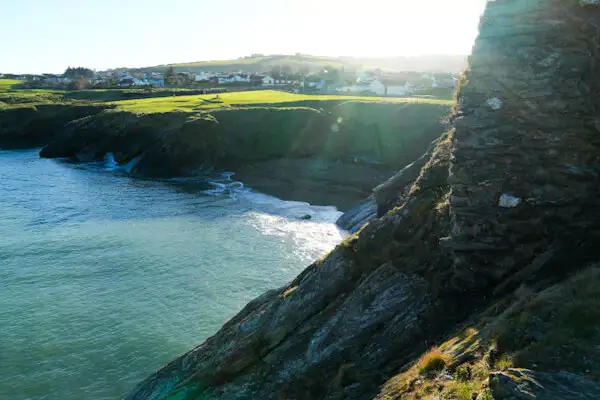
The larger the image sensor, the more light it can normally capture, but the larger and more expensive the lenses tend to be, as with the full-frame system. This doesn’t always have to be the case, but it often is. A nice side effect: this system is particularly good at portraits with bokeh, i.e. background blur – if you photograph a lot of people or are or want to become an influencer, this may be very interesting for you.
A small image sensor enables the construction of small cameras with small lenses, such as the MFT system. This means that MFT cameras are potentially lighter and smaller than full-frame cameras in terms of design. This is not always the case in practice, but it tends to be the case. As a wildlife photographer, for example, you don’t need to lug around huge, heavy and expensive telephoto zooms in the MFT system, because they are significantly smaller, lighter and cheaper with MFT. However, portraits with background blur are somewhat more difficult to achieve.
The medium-sized APSC sensors are now so good that most amateur travel photographers among us will be perfectly happy with them for a very long time. APSC cameras are generally somewhat cheaper, lighter and more compact than full-frame cameras and this is especially true for the lenses!
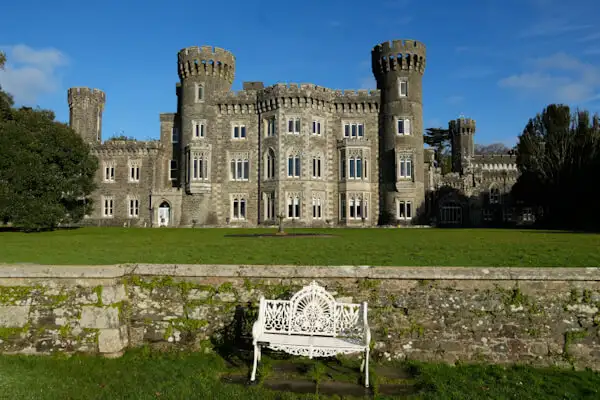
Myths in the camera industry
There are two myths in the photography world that (still) persist: ‘More megapixels is better’ and ‘Full format is better’. Let’s take a closer look:
A standard sensor today has around 24 megapixels resolution more or less. that’s many times more than what professional cameras had at the beginning of the digital era back then. With 24 megapixels plus or minus, you can easily print large images, for example in A3 format. I think that’s enough for most people – certainly for me.
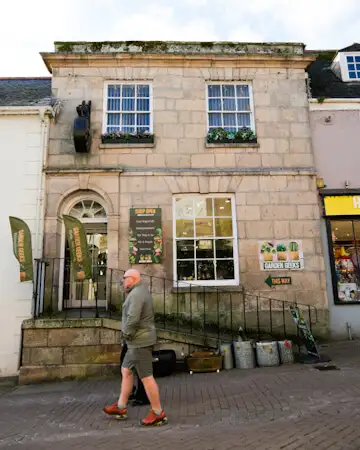
Landscape photographers also like to choose cameras with 40, 50 or 60 megapixel sensors. This gives them a higher resolution for very large prints. However, they also need very good lenses that can keep up with this resolution. And then the files will also get bigger, which means larger memory cards, bigger hard drives, more cloud storage and faster computers. Of course, there’s nothing wrong with that if that’s what you want – you just need to be aware of it.
A top film camera on the market is the SonyA7S3 with 12 megapixels. Fewer megapixels make the camera faster (to put it bluntly) and are completely sufficient for 4K films. Even for social media and for a blog like this one, 12 megapixels would be more than enough. Why? Because the photos have to be heavily compressed anyway to be shown at all by Google, Instagram and co.
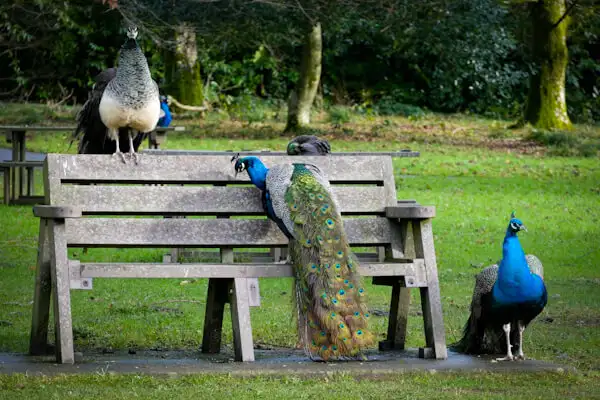
Now we come to cropping (new German for cropping enlargement): I can easily crop into my picture with my 27 megapixel camera and still have enough resolution for a blog, a YouTube channel or any other social media channel. I also know of professional photographers who work for large travel magazines and do so with a 24MP camera – so that’s also enough for professional demands.
This megapixel range is therefore a good standard for many areas. Are more megapixels still better? Yes, if you want to print very large, for example. But for most of us amateurs, plus-minus 24 megapixels is perfectly adequate.
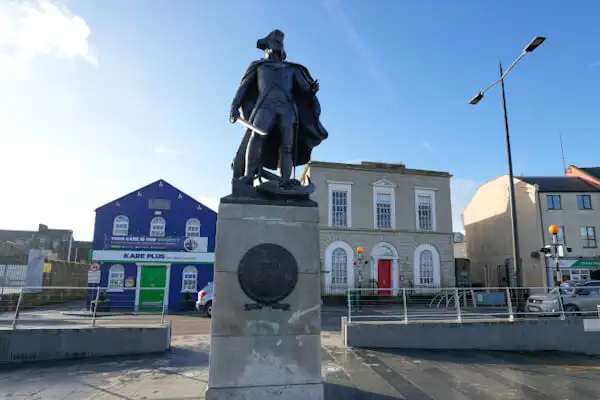
Let’s take a quick look at ‘full-frame is better’: there are several great full-frame cameras that are not necessarily bigger, more expensive or heavier than APSC cameras. But the full-frame lenses are generally larger and heavier than APSC lenses. If that doesn’t bother you, full frame might be a good choice for you. I thought about it myself and ended up with the APSC system because of the size and weight.
Is full frame better than APSC? That depends on what you need and that has more to do with the lenses than the sensor. The major camera manufacturers all offer professional lenses, which are of course much better than mid-range lenses. However, they are also many times more expensive, heavier and larger. Professionals who need this quality for their work simply pay more and also carry more weight when travelling.
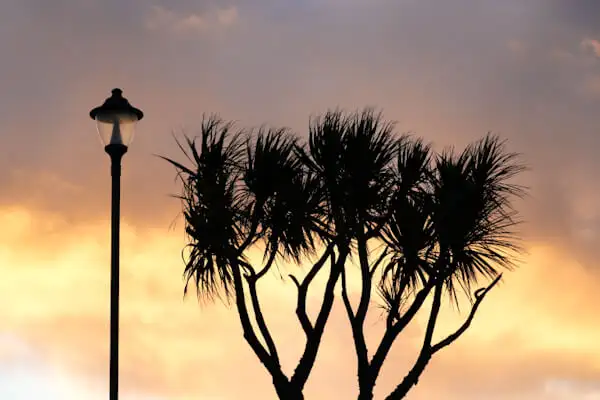
And unfortunately, some camera manufacturers have released few good lenses for their APSC cameras in recent years and have mainly focussed on the higher-margin full-frame range. Of course, they also had an active marketing programme that supported more megapixels and full-frame format, because they made good money from it.
However, the trend is reversing, as camera manufacturers such as Fujifilm, in particular, have proven that it is possible to build good APSC cameras and be very successful on the market.

In fact, today’s APSC cameras have become so good that most viewers would not be able to tell whether a picture was taken with a full-frame or APSC camera. And there are also an increasing number of really good mid-range lenses for APSC that completely fulfil my amateur requirements.
I prefer good quality at a fair price with a compact design and low weight for my travels. So is full-frame better? Not necessarily. For me personally, APSC is better than full-frame because it covers my needs better.
And I believe that APSC is also generally a very good choice for many amateur travelling photographers.
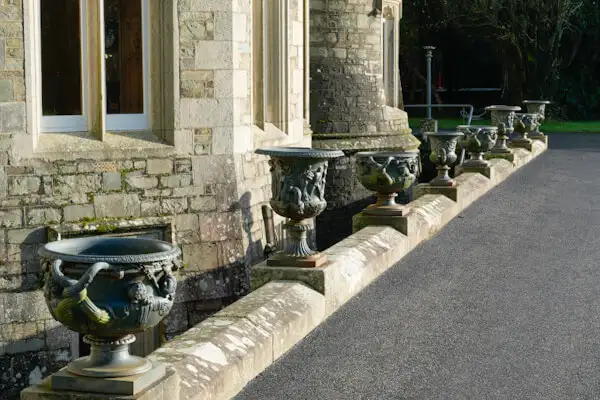
Which camera manufacturers are there and what do they offer?
I grew up in the days of analogue cameras and had several Canon and Nikon cameras back then. Other brands that existed back then no longer exist today (Minolta), others have joined the photo sector (Fujifilm, LUMIX (Panasonic), Sony).
The pictures on this blog have so far been taken with an older LUMIX compact camera (TZ…?), a Canon M5 and several smartphones. From now on, I’ll mainly be using my brand new camera, which we’ll talk about below.
Today, the camera market for DSLM system cameras essentially looks like this:
Full-frame cameras: Nikon, Canon, Sony, LUMIX (Panasonic)
MFT cameras: LUMIX, OM-Systems (formerly Olympus)
APSC cameras: Sony, Fujifilm, Nikon, Canon
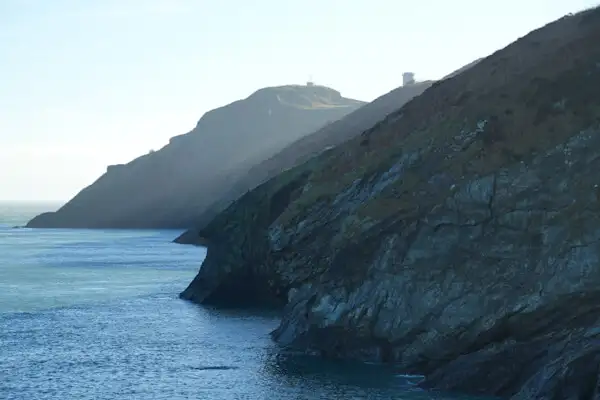
Which lens manufacturers are on the market?
Of course, all the camera manufacturers mentioned also offer lenses for their cameras – some more, some less.
But there are also several interesting third-party manufacturers of very good lenses for the above-mentioned cameras. For example Sigma, Tamron or Viltrox. There are other lens manufacturers, but let’s leave it at these three for now.

My own new camera equipment
You will have already realised that I decided in favour of an APSC camera. Because there is a very good range of Sony lenses and third-party lenses for Sony cameras, I opted for a Sony. I also liked the handling, which I tested in the shop. My current photo equipment looks like this:
Camera: Sony Alpha 6700 in combination with
Travel zoom: Sony 18-135mm aperture 3.5-5.6, plus a
wide-angle zoom: Sigma 10-18mm, aperture 2.8 and for the bokeh another
fixed focal length: Sony 50mm, aperture 1.8.
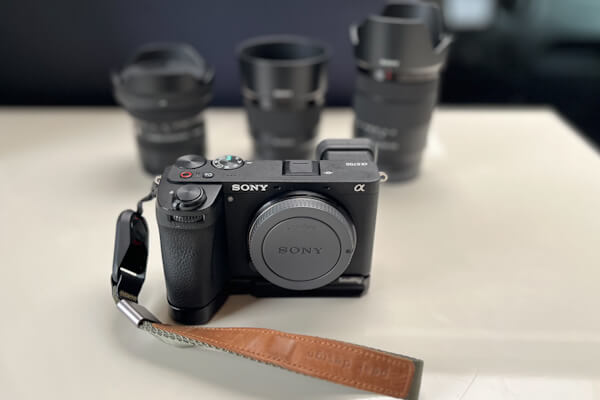
This allows me to cover many situations, from a strong wide-angle to a good telephoto range, and I still have a fast fixed focal length with me for the occasional photo where I want a good background blur. The travel zoom is not extremely fast at f3.5-5.6, but the Sony Alpha 6700 has good noise behaviour, which means that pictures in low light are still very good. Speaking of low light: even the wide-angle zoom is still quite fast at f2.8 and I have already taken my first starry sky pictures with it without any problems.
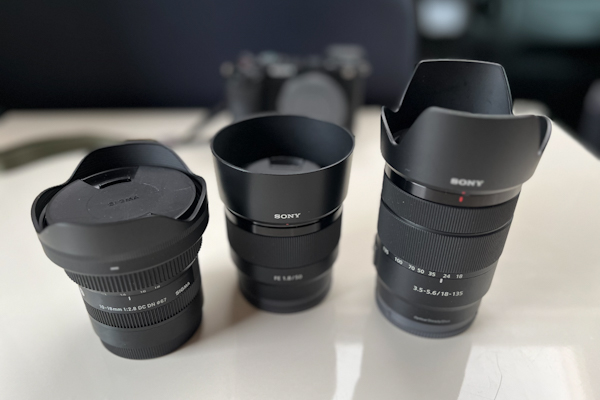
I also bought a very compact shoulder bag (Crumpler Sling 3800). It’s light, handy, everything fits in and the bag doesn’t look like a typical photo bag, which I like. I’ve had the bag hanging around my shoulder for several days for many hours and hardly felt it, as the camera and lenses are super light.
I can do without a camera rucksack and would like to do so. I want to be able to swing my bag forwards while walking and change a lens while walking. I also want to be able to take my camera in and out while walking or standing without having to take off a rucksack and put it on the ground. The ground might be wet or dirty from time to time and the easier I can get to my equipment, the more I actually use it!
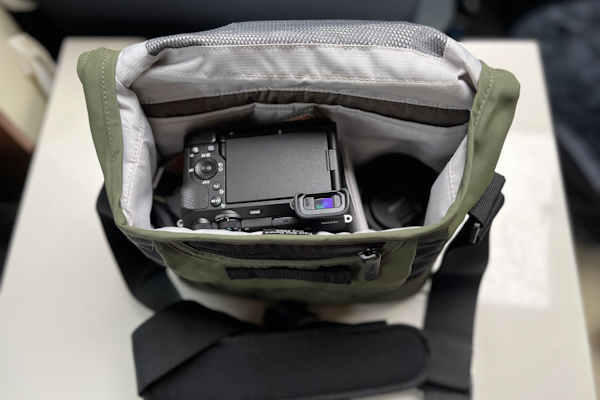
I have a hand strap from Peak Design on the camera. I don’t use the camera strap at all because I have the bag around my neck and often hold the camera in my hand for long periods of time. Because the camera is light and has a good grip, this is not a problem and the hand strap provides additional security against accidental dropping.
However, the Sony Alpha 6700 is a little too small for my XL male hands. My little finger floats in the air under the hand grip. Some people don’t mind, but it bothers me. I therefore screwed a grip extension from Smallrigg underneath, which I am very happy with: Now the camera fits much better in my hands and the little bit of extra weight doesn’t bother me because the overall system is and remains very light.
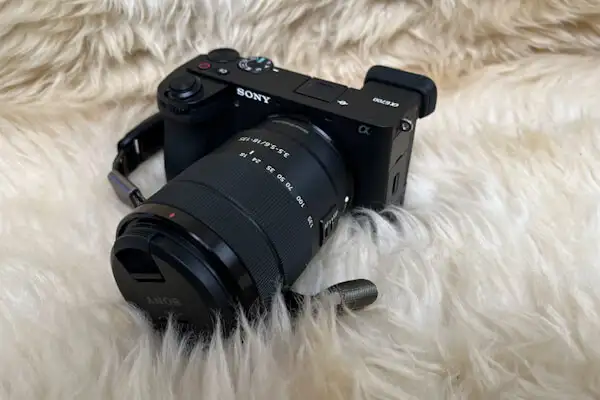
An AKA Swiss plate for a tripod is already integrated into the handle extension, which fits Smallrigg tripods. So you don’t need to screw anything down if you want to quickly put the camera on the tripod. I haven’t bought a Smallrigg tripod yet, but I’m planning to!
I also have a second battery from Sony, a small case with additional memory cards and a camera cleaning kit from Rollei. The latter is a bit big, so I usually keep it at home for the big clean and when I’m out and about I only take a blower and a microfibre cloth from the set in my photo bag.
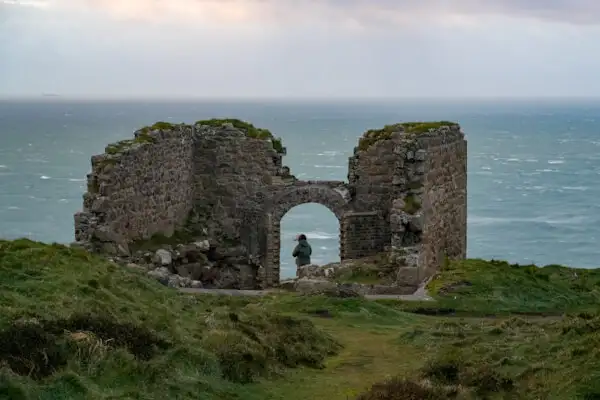
Alternative camera/lens combinations for travel photography in APSC format
In the following, I would like to introduce you to a few current combinations and kits that are all in the mid-range price range and, in my opinion, are great alternatives for interested amateur travel photographers.
In order not to overload this blog article, we are only talking about APSC cameras and only a handful (exactly 5) combinations that you can currently buy new, and which I think are great for amateur travel photographers. There are many more options, but I would like to recommend the following 5 combinations or kits to you first.
As a first lens, I would recommend a good travel zoom (about 18-135mm focal length or similar), or a good standard zoom (about 16-50mm focal length or similar). This will give you a very versatile ‘outfit’ with compact dimensions.
There are always professional photographers in the travel sector who estimate that they take about 70-80% of all photos with their standard zoom, often a 24-70mm, f2.8 in full format. This corresponds to about 16-50mm in APSC format. You can also add more specialised lenses later (like I do). Why not fixed focal lengths? Because they are more specialised. I think most people, myself included, find it easier to use a zoom when travelling.
The following list is not exhaustive, as there are simply too many options, but hopefully it will help you get started.
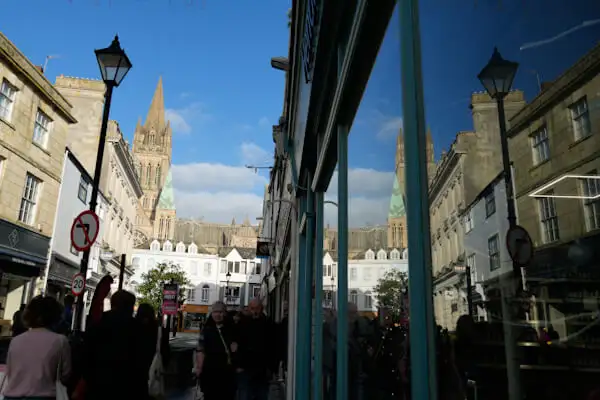
Sony Alpha 6700 with zoom: Sony 18-135mm, f 3.5-5.6
Very small and light, very good grip and very good sensor with 27 megapixels. E-mount compatible with full-frame Sony cameras. Very large selection of lenses from Sony, Tamron, Sigma or Viltrox. The viewfinder is quite small and rather average (sufficient for me) but the display is good. Very good photo and film specifications. Not cheap in comparison. The 18-135mm is a great travel zoom with very good image quality and low weight. This has become my kit.
Nikon Z50II with zoom: Nikon 18-140mm, f 3.5-6.3
Medium-sized camera body, very good feel and ergonomics, compatible with full-frame cameras in Nikon’s Z-mount. Decent viewfinder and screen. Good sensor with 21 megapixels. Slightly more limited lens selection, but is constantly improving thanks to third-party manufacturers. Favourable price in comparison. Good sensor with 20 megapixels. Good photo specifications and somewhat simpler film specifications. For photographers without too much video ambition, the Nikon Z50II is a very good and relatively inexpensive choice! The 18-140mm is a very versatile travel zoom for this camera.
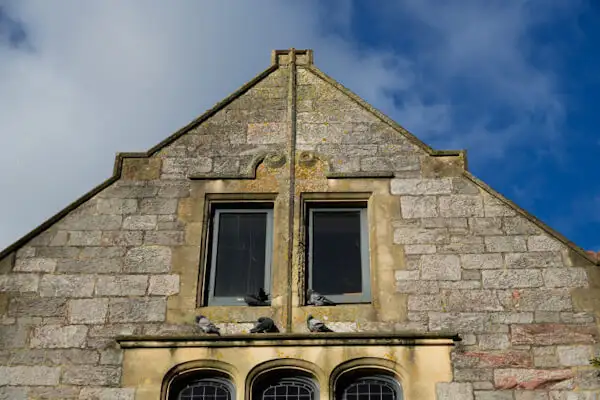
Canon R7 with zoom from Sigma 18-50mm, f 2.8
Slightly larger camera, well suited for slightly larger hands. Good ergonomics with a decent viewfinder and screen and a fairly good sensor with 33 megapixels. Compatible with Canon’s R-mount full-frame cameras. Until recently, Canon did not allow third-party manufacturers to build APSC lenses for the R-mount, but has only built a limited range of lenses for APSC itself. In the meantime, the system seems to be opening up and more lenses from Sigma are being added. The 18-50mm is a very fast and high-quality standard lens that fits the camera perfectly.
Fujifilm XT50 with zoom: Fujifilm 16-50mm, f 2.8-4.8
Very small and very compact with minimal grip. Viewfinder and screen correspondingly compact. Very good sensor with 40 megapixels. Very small camera for small hands. Chic retro look and feel. Very good specifications for photo and film. For the small camera you should choose a small zoom, such as the very good new 16-50mm.
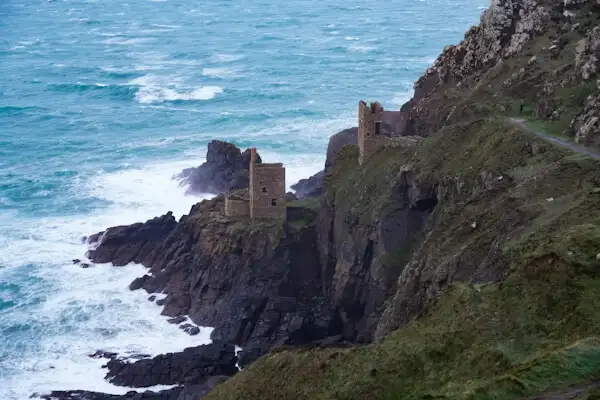
Fujifilm XT5 with zoom: Fujifilm 16-80mm, f 4.0
The alternative for larger hands with the same 40 megapixel sensor, larger viewfinder and larger screen. Chic retro look and feel, with a moderately large grip. Very good specifications for photo and film. The zoom is slightly larger and therefore more versatile than the 16-50mm. It fits very well on the slightly larger camera.
If you take a closer look at these camera-lens combinations, you will definitely have a good starting point for your camera purchase.
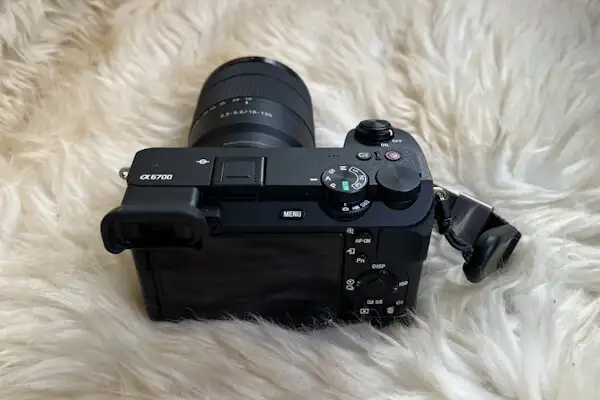
Conclusion
Finding the right camera is not easy, because there are simply too many options. But that’s a good thing, because it gives many different photographers the chance to find something that suits them.
With the small selection in the previous section, I have shown you five alternatives, all of which are very good APSC cameras, are in the middle price segment and are well equipped with good and versatile zooms for many situations when travelling.
More is always possible and more lenses are always possible, but as an interested and ambitious (amateur) travel photographer you have a great starting point with which you are sure to have a lot of fun on your journey.
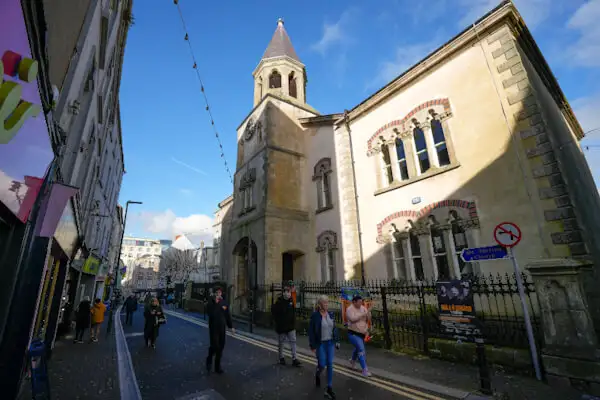
And which of the five alternatives should it be? In my opinion, it helps a lot to go to a good specialist shop and pick up the five cameras. They are all good, but which one do you like to use? Which one feels good in your hand? Which one suits you in terms of size, weight and arrangement of the controls? Only you can decide that, and the proof of the pudding is in the eating!
That’s how I did it, by the way. I’ve already been on a few photo tours with my new equipment and I’m really happy with it so far!
And of course my choice is not the only possible one – if you prefer full-frame or MFT – go for it!
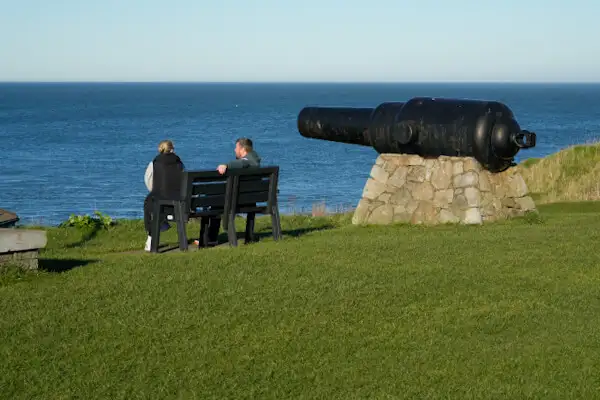
By the way:
If you want to buy a used camera, lenses or photographic equipment:
Here is another helpful link to MPB.com. There you can easily buy and sell used photo equipment of all brands online. MPB works in a similar way to your local photo retailer, only online. The German headquarters of MPB is in Berlin. All photographic equipment is tested there and sold with a guarantee, just like at your local dealer. Just take a look at the MPB website. The link is a referral link, see transparency.
And if you completely disagree with me – then I respect your opinion. Buy what makes you happy photographically!
And for anyone who hasn’t yet got an overview of the jungle of different camera options, I hope I’ve been able to give you a bit of orientation with this article. It’s a bit more text…
I hope you have lots of fun buying a camera – and of course taking photos!
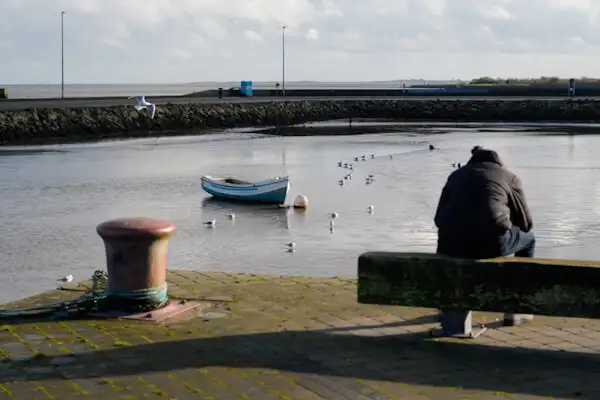
More interesting articles for you
Affordable travel cameras for beginners
Basic technical know how for your travel camera
Which lenses for travel photography?
WHAT EXACTLY IS TRAVEL PHOTOGRAPHY?
Cover picture: Uli’s equipment for travel photography (Photo: Urich Knüppel-Gertberg)
